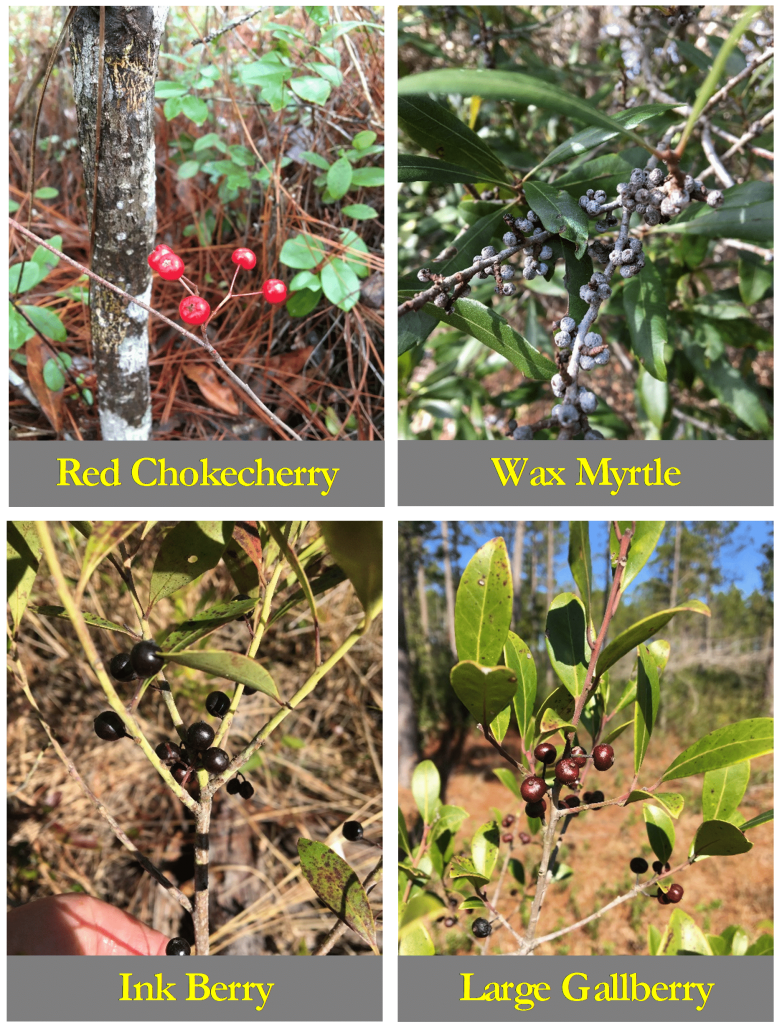Berries are important sources of nutrition for many birds, especially in winter when other sources of food are less abundant. For the plants, birds help transport seeds and prepare them for germination by their passage through the bird’s digestive track. Understanding this link between berries and birds is all about what each party gains from the partnership. The nutritional value in a berry is in the fleshy tissue that surrounds one or more hard-coated seeds. Most birds simply swallow seeds whole and the hard coating protects the embryo within the seed as it passes through the gut. The fleshy portion of the berry is rich in carbohydrates and lipids (fat) that fuel metabolism in cooler weather. There is evidence that the passage of seeds through the guts of birds acts to scarify (etched by acids) and soften the hard coating, making germination more likely if the seed is deposited in a suitable place. So, the timing of ripened berries in late winter and the presence of winter birds that eat them is no accident. This is how evolution works in animal-plant dependent relationships.
Other examples include insects and birds that pollinate plants at certain times of the year. In south Mississippi, there are a number of commonly occurring berry-producing plants that feed birds in winter, with one group especially dedicated to this strategy – hollies. By far the most common of this group is Yaupon (Ilex vomitoria) with its shiny, bright red berries that are hard to miss in the landscape. And yet, the blue to reddish-blue berries of Inkberry (Ilex glabra) and Large Gallberry (Ilex coriacea) are also common, if you know where to find them. Not to be outdone, however, is Wax Myrtle (Morella cerifera) that produces an abundance of blue/white coated hard berries that are also relished by many wintering birds. The waxy coating is rich in lipids. But if you look around, other winter blue and red-berried plants are also depending on birds to spread their seeds. One example is Red Chokecherry (Aronia arbutifolia), with its prominent red berries. Of these examples, the two that standout in most or our backyards are Yaupon and Wax Myrtle.

But you may have already noticed that not all individual plants of these species will produce berries, because all of the hollies and Wax Myrtles are dioecious – referring to a species having male and female parts on separate plants. Yes, this term is based in Latin and Greek, with the root “oecious” meaning “house” and the prefix “di” meaning two. Female plants produce berries from “pistillate” flowers (the female part of flowers) while male plants produce pollen from “staminate” flowers (the male component).
As for the birds that we most often see using winter berries, think of American Robins or Cedar Waxwings that descend upon your local Yaupon or American Holly (Ilex opaca) trees and devour them with gusto, and then fly over and deposit the expelled berry “pieces and parts” on the roof and hood of your car! Yellow-rump Warblers and Tree Sparrows are two other common winter species that relish the berries of Wax Myrtle. Apart from their value in feeding birds in winter, these berry-producing plants are also great native plant choices for your landscape, providing places for birds to nest and roost.
Look for these important plants on your winter walks in your neighborhood or on the many nature trails across the coast. Consider this my “Winter Berry Scavenger Hunt” challenge.
Hope to see you in OUR great outdoors!!!